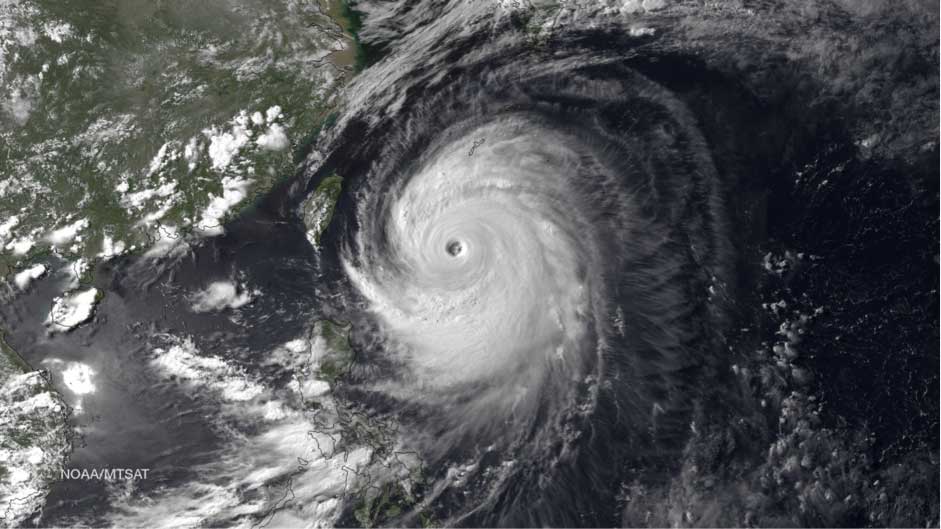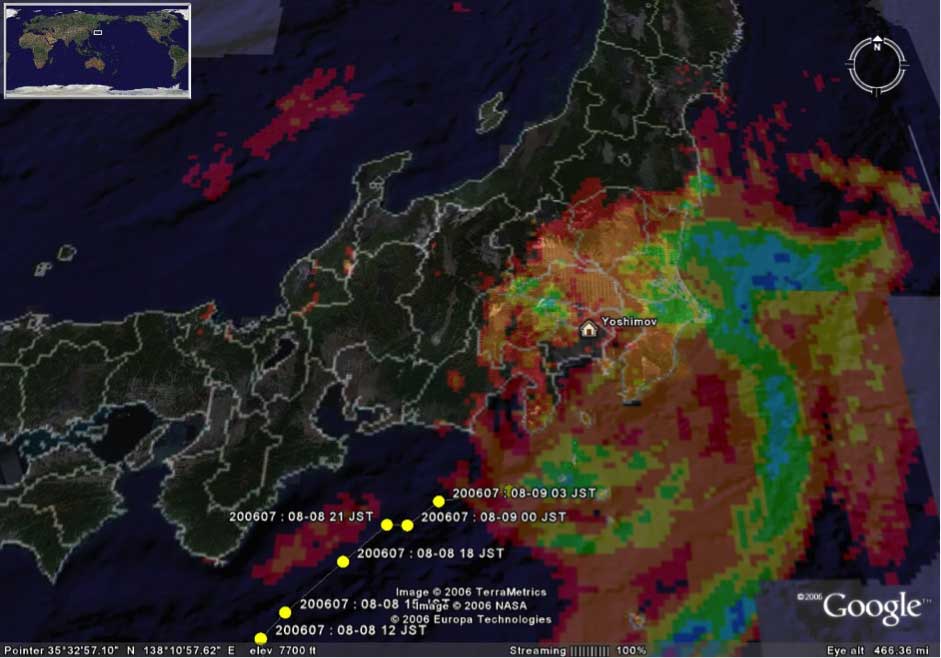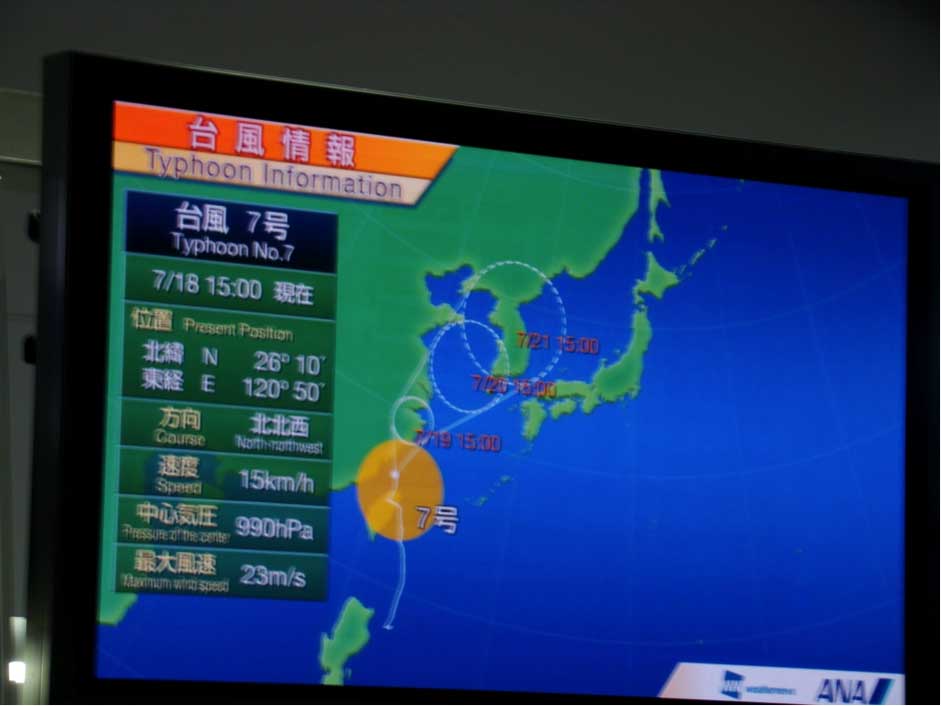Typhoon Season is here

Typhoon season in Japan runs from June to December, but most typhoon activity occurs between the months of July and September. Southern parts of Japan, such as Okinawa or Kagoshima are particularly affected by these storms, but residents of any part of Japan are likely to experience one or more during their time here.
A typhoon is the same as a hurricane or tropical cyclone. All three are regionally specific names for a storm that falls in the highest classification of storm based on wind speed. Lower levels of storms include: Tropical Depression, Tropical Storms, etc… the preparation and safety tips remain the same for these lower level storms.
Characteristics of a Typhoon

- High winds powerful enough to damage or destroy buildings, trees, power and telephone lines, and hurl debris at dangerous speeds
- Storm surges, or temporary rises in sea levels, which can flood coastal areas and damage buildings near the shore
- Very heavy rainfall that can cause flooding and mudslides
What to Do If a Typhoon is Approaching?
Typhoons are notoriously difficult to accurately predict where, when and at what strength they will strike land. They will often veer off-course, change or their speed, or intensify quite suddenly. Many times typhoons that were predicted to hit have missed completely, or vice versa, suddenly bearing down on the city it was expected to miss.
Watch NHK Television
- NHK (Channels 1 and 3)
*While not always in English, important notices are given in English*
Listen to US Armed Forces Network (AFN) Radio
AFN Radio provides regular weather bulletins in English. You can listen to AFN on
- 1 FM in Okinawa
- 1575 AM in Nagasaki and Hiroshima Regions
- 810 AM in the Kanto Region
Make an Emergency Kit
Essential Items to Include:
- Water: 1 gallon / 4 litres of water per person, per day for drinking and sanitation
- Food: 3 days’ worth of non-perishable, easy-to-prepare foods (canned, shelf stable)
Additional Items to Include:
- Plastic wrap, paper cups and plates, utensils (wrap to avoid washing)
- Manual can opener
- First aid kit including essential medications, prescriptions
- Flash light with extra batteries
- Portable radio with extra batteries
- Filter mask
- Whistle
- Tool to turn off utilities (wrench, pliers, or multi-purpose tool)
- Sanitation and personal hygiene items
- Garbage bags & plastic ties for personal sanitation, garbage
- Blankets
- Warm clothes, change of clothes
- Copies of important documents, ID
- Passport, 30,000 yen in cash
- Family and emergency contact information
- Map of the area (evacuation areas)
What to do if a Typhoon Strikes your Area

Keep Safe from Heavy Rainfall
- If possible, stay at home and keep advised of the situation by watching NHK
*While not always in English, important notices are given in English on NHK* - Be prepared to evacuate by knowing where to go, and having a disaster kit prepared and on hand
- Stay clear of rivers / streams and large drains. There is potential for any of them to overflow without warning
Keep Safe from High Winds
- Stay inside! Keep advised of the situation by watching NHK. While not always in English, important notices are given in English on NHK (Channels 1 and 3).
- Secure or move inside outdoor items such as toys, grills, bicycles, furniture, plants and anything moveable on the balcony. Move potted plants and other heavy objects away from windows inside as well.
- If you have shutters on your windows and doors, pull them shut. Shutters can prevent your windows from being broken by flying items.
- Set your freezer to the coldest temperature setting to minimize spoilage if the power is cut off
- Watch for leaks around windows and doors. If the wind is strong enough, water may be blown into your home even if the windows are closed. Have handy towels, rags and mops
- If the storm becomes severe, move into a hallway or area where there is the least exposure to external glass windows.
- Draw curtains across the windows to prevent against flying glass should windows crack.
- A window on the side of the house away from the approaching storm should be opened a few inches. This will compensate for the differences of indoor and outdoor air pressure.
- Remember that typhoons have “eyes”, areas in their centre where the weather appears calm. If the eye passes over your area, it may appear that the storm has finished, with winds then picking up again as the remainder of the storm arrives
- After the typhoon is gone, check for broken glass, fallen trees and downed power lines which may present safety hazards near children’s school bus stops, outdoor trash areas, etc.










